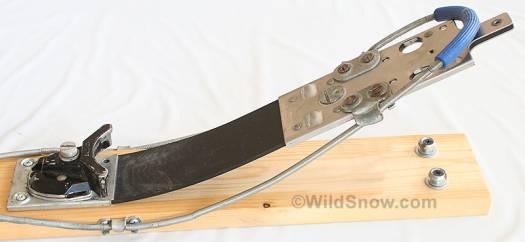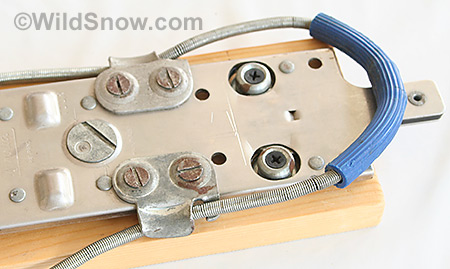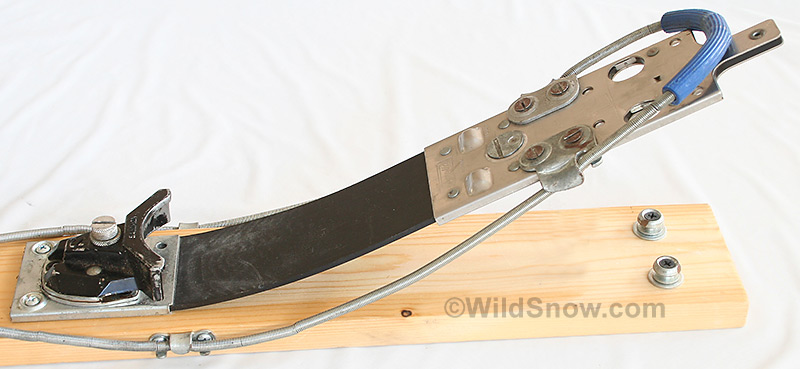Before the late 1960s, alpine ski touring was done with simple cable bindings that were either skied downhill with unlatched heels, or else latched down with simple side lugs on the ski sidewall. The problem with such “cable bindings” was they lacked side-to-side stability in touring mode, and it was inconvenient to latch your heels down. Sometime in the late 1950s or early 1960s binding makers began to address these problems by adding an underfoot “plate” or “frame” to various touring bindings. This model from Tyrolia is one such effort, and represents a transitional design trending toward eliminating the cable altogether, leading to modern frame bindings such as Fritschi Diamir Freeride.
Boot is held in by the cable, side release is provided by a releasable toe unit that rotates sideways under spring tension, upward release by a small catch and spring system inside the cable front throw. Heel latch-down for downhill skiing is done by rotating a slotted fitting with a coin, which then moves two dogs that engage studs on ski, visible in photo below. Notice how the boot is still held down by cable lugs, but the lugs are mounted on the plate rather than the ski. Click here for detailed zoom and pan.

Tyrolia backcountry skiing binding in touring mode. The plate provides a stable yet flexible platform. Many backcountry skiing bindings have copied this design.

Detail of heel latch system.
Weight: One binding with screws, 36 oz., 1020 g
This ski binding was provided all the way from France by Stéphane Pennequin — I traded him a few items of vintage climbing hardware for the binding.

Tyrolia Tour binding thumbnail.


